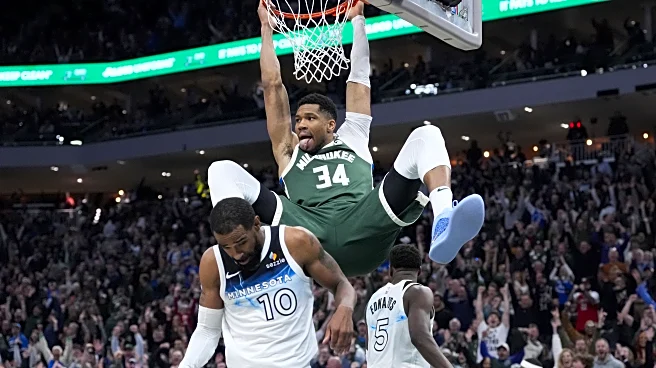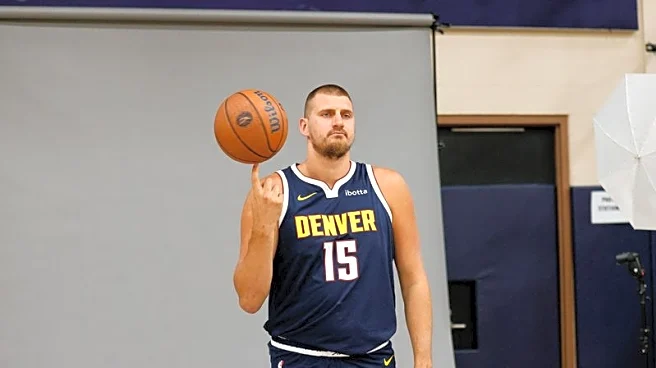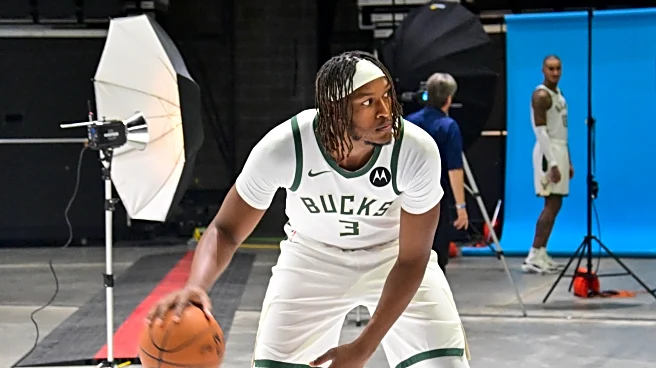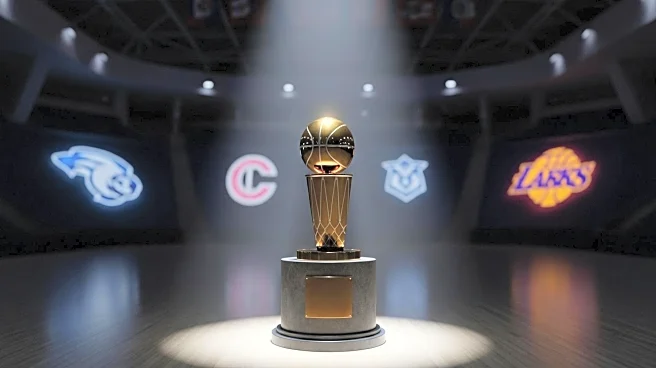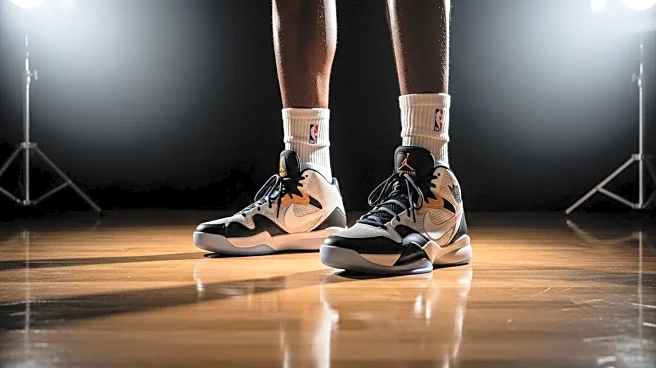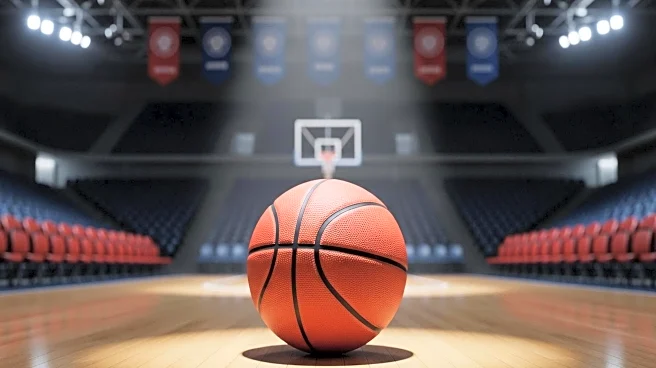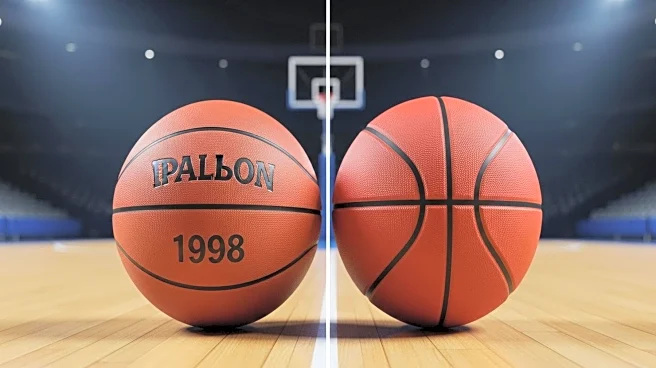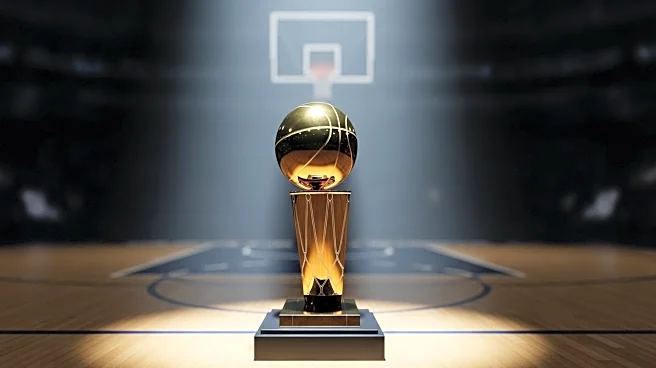A court. Somewhere—east coast, west, heartland, Europe—it doesn’t matter. The hardwood’s what’s important. The rims. 10 feet high, nylon freshly twined; the history of basketball and everything it touches
woven into the cords. This is life.
Inside, the stands are cloaked in black, the court a player strutting and fretting on stage. Spot-lit. A monologue mid-verse. At the top of the key, a monolith: Nikola Jokic.
He catches the ball, back to the basket. Guards and wings pirouette around him like hummingbirds, looking for a hand-off. Cutters flash to the dunker’s spot, anticipating a no-look lob. Defenders scurry like ants before rain. The supercomputer processes it all—the light, the motion, the angles. The defense is on edge. He feigns a pass, spins around his defender, lumbers towards the rim—a tank traversing tumultuous terrain.
In the far corner, another giant comes to life. Chiselled from marble, the colossus rotates at the hips, limbs contracting and extending, simultaneously glacial and instantaneous; temporal dilation in full effect. The Greek god scoffs at time and space—they are nothing to him. His body coils, preloads, then the plantar flexion does the rest. Flight and fight.
At the summit, it’s quiet. Snow wafts through the whispering wind. But, as the giants converge, their fury echoes, speaks in thunder: the ruckus is coming.
What the “experts” say
No off-season is complete without barbershop banter, playground parley, and… online outcry? Alright, you get the point—player rankings are irrevocably part of hoops culture. We bruise on that. So, here’s how the prominent outlets have most recently ranked Jokic and Giannis (with some of these rankings predating the 2024–25 season):
What about their respective places on all-time rankings?
*Note: the CBS and ESPN rankings were of the top 25 players of the 21st century.
The message is clear: Nikola Jokic, both now and all time, is widely regarded as a better basketball player than Giannis Antetokounmpo. But, as Ghostface and Raekwon pondered, can it be all so simple?
Hardware
Both Jokic and Giannis could never play again and be first-ballot Hall of Famers, ranking comfortably towards the top of the NBA’s pantheon of greats. Needless to say, their trophy cabinets are stacked:
While Giannis has played two more years than Jokic, he’s just 75 days older, so they’re effectively on the same NBA timeline. And while Jokic does have an additional MVP, Milwaukee’s finest clearly has the greater collection of accolades overall.
Advantage: Giannis.
Stats rule everything around me
Let’s get this straight: both Jokic and Giannis are statistical juggernauts, and have been for some time. Jokic won his first MVP in the 2020–21 season and, from the start of that season until now, has averaged an absurd 26.8 PPG, 12.3 RPG, 9.0 APG, 1.4 SPG, and 0.7 BPG on ridiculous .586/.378/.822 shooting splits. In that time, he’s finished no lower than second in MVP honours and claimed four of his five All-NBA first team selections.
Since his first MVP season back in 2018–19, Giannis has been equally dominant—you don’t get crowned the new-age M.D.E. for nothing—averaging 29.6 PPG, 12.0 RPG, 6.0 APG, 1.1 SPG, and 1.3 BPG on .575/.284/.670 shooting. In this seven-year stretch, Giannis has finished no lower than fourth in MVP voting and earned All-NBA first team honours each year. His defensive impact—less-easily quantifiable by stats—also warrants mention, as he’s finished no lower than ninth in Defensive Player of the Year (DPOY) voting during that span.
The takeaways are what you’d expect—Jokic bests Giannis in assists and shooting efficiency, while Giannis has Jokic’s number in points, blocks, and defense. Everything else is a wash.
Digging deeper, Jokic is the advanced stat darling of the two. In fact, in “collect-all” stats like Player Efficiency Rating (PER), Win Shares per 48 minutes (WS/48), and Box Plus/Minus (BPM), he holds the all-time career records. He’s also led the league in Value over Replacement Player (VORP) in each of the last five seasons.
However, Giannis is no slouch either, with peak scores similar to Jokic’s in PER (32.1 vs. 32.8) and WS/48 (.292 vs. .308). His defensive rating—ranging from a best of 97.4 to a worst of 113.2 in the seven-year span—is also better than Jokic’s (ranging from 108.9–115.1). It’s also worth noting that Giannis has carried a significantly higher usage percentage over this stretch—34.7% compared to Jokic’s 29.5% over five. This kind of volume typically suppresses efficiency metrics, making Giannis’ sustained production all the more impressive—especially for a guy who “can’t shoot.”
There is a litany of other stats that could be thrown into the mix, but in a battle as mythic as this, it’s what happens when the game is on the line that matters most. Per 100 possessions, here’s how they fared in the clutch during the 2024–25 season:
On the surface, Jokic seems the conqueror here with the higher points, assists, and steals averages, but closer inspection shows Giannis as the better caretaker (3.4 vs. 2.4 assist-to-turnover ratio) to go along with his superior board work, rim protection, and plus/minus numbers. And, of course, when the lights are at their absolute brightest, both of these dudes come through (see Finals, NBA—where, as great as Jokic was, Giannis was even better).
In all, while Jokic takes the flowers in analytics—a testament to his otherworldly abilities as an offensive engine—Giannis’ longevity, defensive impact, and ability to rise to the moment, both as a play finisher and obliterator, cannot be overlooked (ask CP3, Ayton, Capela, etc.).
Advantage: a razor’s edge.
Head-to-head
Despite playing 10 and 12 years respectively, Jokic and Giannis have played each other just 16 times. In those matchups, their numbers are eerily similar (per Stathead):
Ultimately, there’s nothing new in this—Giannis again edges Jokic in points and blocks, while Jokic again has Giannis’ measure in assists and shooting efficiency. So, with such similar head-to-head statistical outputs, it’s hard to argue anything other than wins really matter here (even if Giannis has claimed the last two games they’ve played).
Advantage: Jokic.
Season outlook
Looking ahead, the Denver Nuggets and Milwaukee Bucks are set to face one another in January for both of their 2025–26 season matchups—one on the 11th (in Denver) and the other on the 23rd (in Milwaukee). Of course, both teams will look completely different from even last year’s iterations, with the Bucks making arguably the most shocking moves of the offseason, and many pundits proclaiming the Nuggets as the overall winners of the offseason.
Let’s recap. The Nuggets traded Michael Porter Jr. and a 2032 first-round pick for longtime apple of Bucks fans’ eyes Cameron Johnson, reacquired championship role player Bruce Brown to replace Russell Westbrook, signed gunner Tim Hardaway Jr., and strengthened perhaps their biggest weakness—a backup for Jokic—by trading Dario Saric for Jonas Valanciunas. In brief, they are primed for a title push.
As you’re all well aware, the Bucks also made waves with the Myles Turner/Damian Lillard transactions and signings of Cole Anthony, Gary Harris, and Thanasis Antetokounmpo (to go along with the re-signings of several key players and losses of franchise staples Brook Lopez and Pat Connaughton).
So, with both sides revamped—and a little help for the Bucks with the Eastern Conference being as wide open as it ever has been—the 2025–26 season offers a natural resolution to this battle for basketball supremacy. Enter, playoffs. Yes, this epic warrants nothing less than an NBA Finals showdown. Jokic, Giannis, it’s on you—make it happen.
Back at the summit, the fracas has arrived. The titans meet, their force splitting the ground, tearing earth like a bone saw through flesh, lava spewing violently into the ether, pyroclastic flow engulfing everything in its path. Through the smoke, a silhouette: a carcass, a figure standing—fist skyward.
This is the story of The Joker and The Freak in the night.

